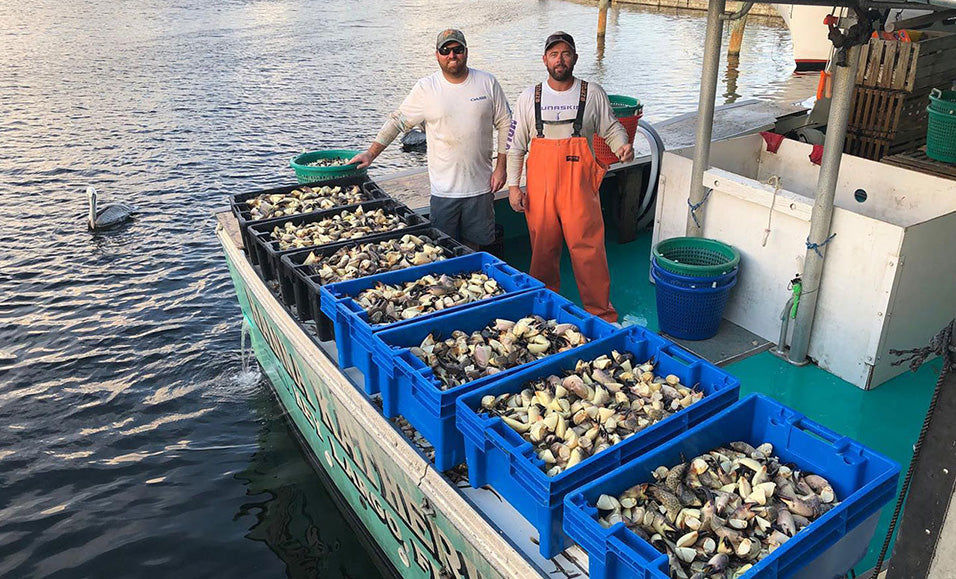As consumers become more conscious about the environmental impact of their choices, sustainable seafood has emerged as an essential topic. Choosing seafood that is harvested responsibly helps protect ocean ecosystems, supports local fisheries, and ensures that future generations can enjoy the bounty of the sea. In this guide, we’ll explore how to make sustainable seafood choices and the benefits of supporting local fisheries.
What is Sustainable Seafood?
Sustainable seafood refers to seafood that is caught or farmed in ways that minimize harm to marine ecosystems, ensure healthy populations, and reduce bycatch (the unintentional capture of other species). Sustainable practices also prioritize fair labor and economic support for local fishing communities.
Why Support Local Fisheries?
Supporting local fisheries offers several benefits:
- Environmental Impact: Locally sourced seafood often has a smaller carbon footprint due to reduced transportation.
- Economic Growth: Purchasing from local fishers boosts regional economies and sustains jobs in coastal communities.
- Freshness: Local seafood is usually fresher, as it doesn’t spend days being transported over long distances.
- Transparency: Buying locally allows you to know where your seafood comes from and how it was caught or farmed.
How to Choose Sustainable Seafood
1. Look for Certifications
Certifications ensure that the seafood you’re purchasing meets sustainable standards. Look for labels such as:
- Marine Stewardship Council (MSC): Identifies wild-caught seafood from sustainable fisheries.
- Aquaculture Stewardship Council (ASC): Certifies responsibly farmed seafood.
- Best Aquaculture Practices (BAP): Ensures eco-friendly aquaculture practices.
2. Know What’s in Season
Seasonal seafood is often more sustainable because it aligns with natural harvesting cycles. For example:
- Spring: Key West pink shrimp, stone crab claws
- Summer: Spiny lobster, mahi-mahi
- Fall: Oysters, grouper
- Winter: Scallops, yellowtail snapper
3. Ask Questions
When buying seafood, ask your supplier:
- Where was this seafood caught or farmed?
- What method was used to harvest it?
- Is it a local or imported product?
4. Choose Low-Impact Fishing Methods
Seafood caught using low-impact methods, such as handlines, traps, or diver-caught techniques, is often more sustainable than trawling or dredging.
5. Use Seafood Guides
Seafood guides like the Monterey Bay Aquarium’s Seafood Watch provide recommendations for the most sustainable seafood choices based on your location and the current market.
Sustainable Seafood Options
Here are some sustainable seafood choices to look for, particularly from local fisheries:
- Key West Pink Shrimp: Harvested from the Gulf of Mexico, these shrimp are responsibly caught using methods that minimize bycatch.
- Stone Crab Claws: Stone crab is a renewable resource since only the claws are harvested, and the crab is returned to the water to regenerate.
- Oysters: Farmed oysters are a sustainable choice as they require minimal resources and help clean the water by filtering it.
- Mahi-Mahi: When caught using handlines, mahi-mahi is a sustainable and delicious option.
- Grouper: Look for grouper sourced from well-managed fisheries using low-impact gear.
Supporting Local Fisheries
1. Buy Directly from Fishermen
Visit local docks, seafood markets, or community-supported fisheries (CSFs) to buy directly from fishers. This ensures they receive a fair share of the profits and encourages sustainable practices.
2. Dine at Restaurants that Prioritize Local Seafood
Many restaurants are committed to sourcing local, sustainable seafood. Ask your server or look for information on the menu about where the seafood is from.
3. Participate in Community-Supported Fisheries (CSFs)
CSFs operate like farm shares, providing consumers with a regular supply of fresh, local seafood. These programs support small-scale fishers and promote sustainable practices.
4. Educate Yourself and Others
Learn about local fishing regulations, species at risk, and sustainability practices. Share this knowledge with friends and family to spread awareness.
Cooking with Sustainable Seafood
Cooking sustainable seafood at home is a rewarding experience. Here are a few tips to get started:
- Keep it Simple: Highlight the natural flavors of fresh seafood with simple preparations like grilling, baking, or steaming.
- Use Every Part: Reduce waste by using seafood scraps for stocks or broths.
- Pair with Local Ingredients: Enhance the sustainability of your meal by pairing seafood with local, seasonal produce.
The Role of Fisheries in Sustainability
Local fisheries are the backbone of sustainable seafood practices. By adhering to regulations, using eco-friendly harvesting methods, and maintaining healthy populations, they play a crucial role in conserving marine ecosystems.
Examples of Sustainable Practices:
- Trap Fishing for Stone Crab: This method minimizes bycatch and allows the crab population to regenerate.
- Handline Fishing for Mahi-Mahi: This selective method reduces the impact on non-target species.
- Oyster Farming: A low-impact aquaculture method that improves water quality and provides habitat for marine life.
Benefits of Sustainable Seafood Choices
- Healthier Oceans: By choosing sustainable seafood, you support practices that protect marine biodiversity and reduce overfishing.
- Healthier You: Fresh, sustainably caught seafood is rich in nutrients like omega-3 fatty acids, vitamins, and minerals.
- Community Support: Supporting local fisheries strengthens coastal communities and helps preserve cultural traditions.
Conclusion
Sustainable seafood choices are not just about protecting the oceans—they’re about creating a harmonious relationship between people and nature. By supporting local fisheries and making informed choices, you contribute to the health of marine ecosystems while enjoying the freshest, most delicious seafood available. Next time you’re at the market or dining out, choose seafood that supports both the environment and your community. Together, we can keep our oceans thriving for generations to come.

